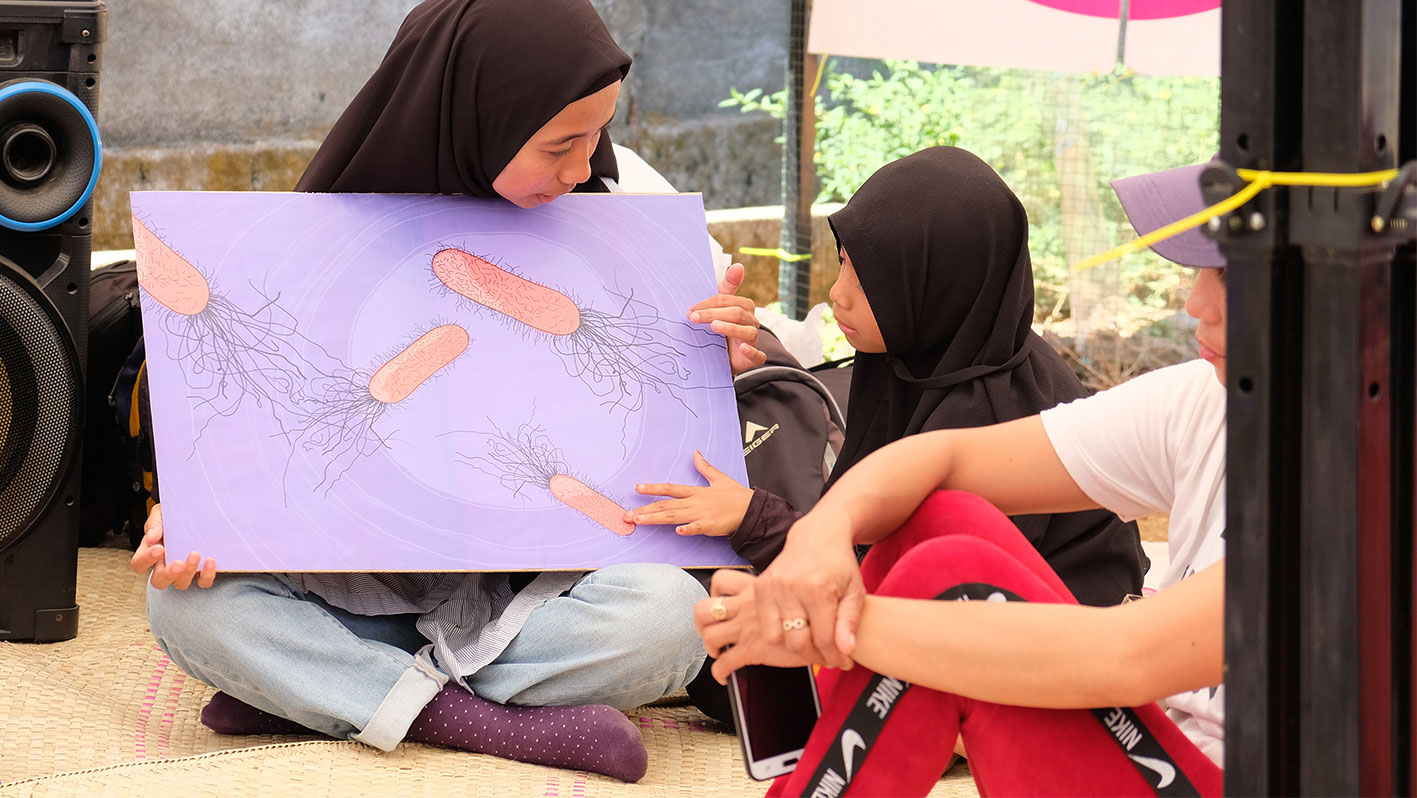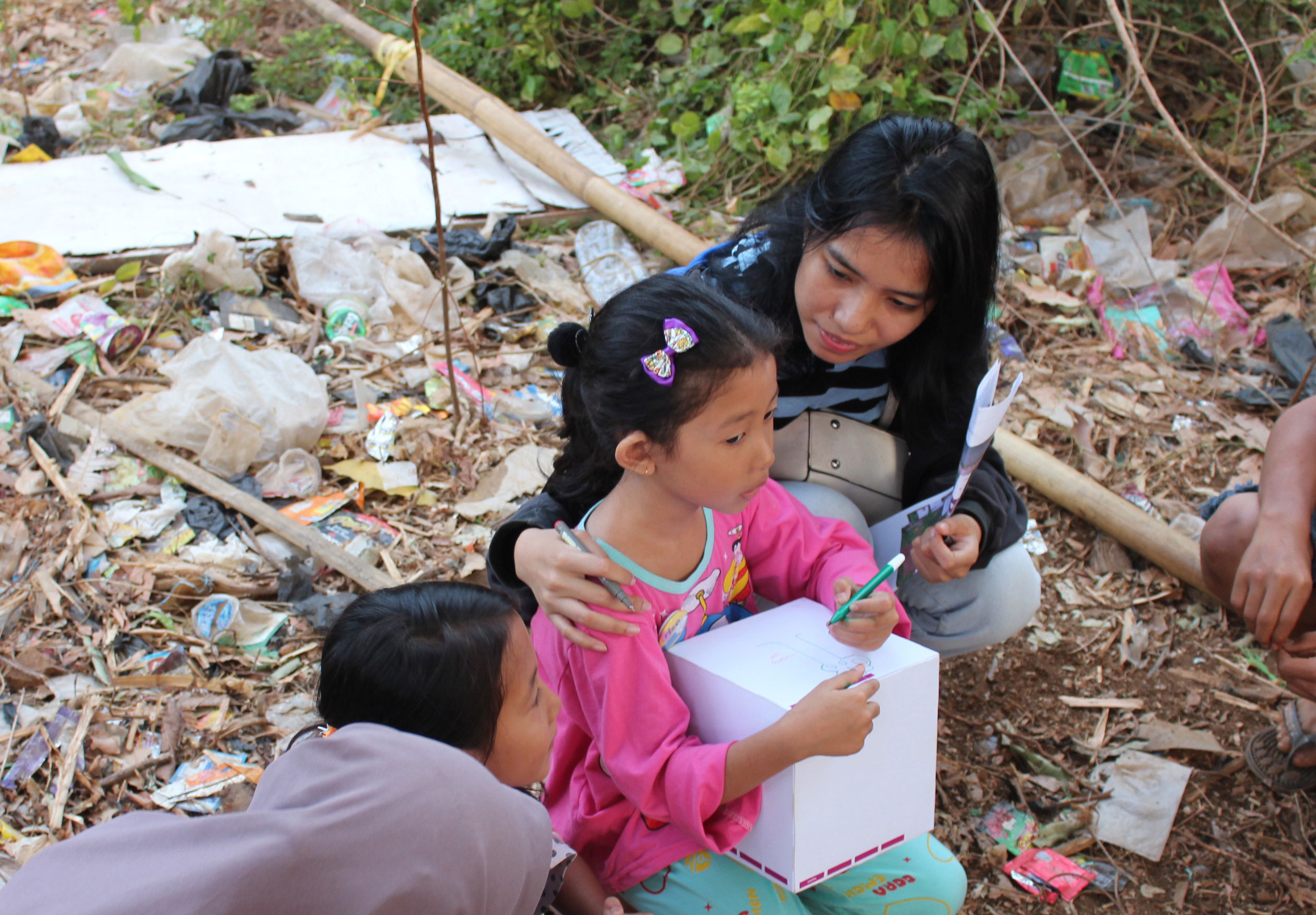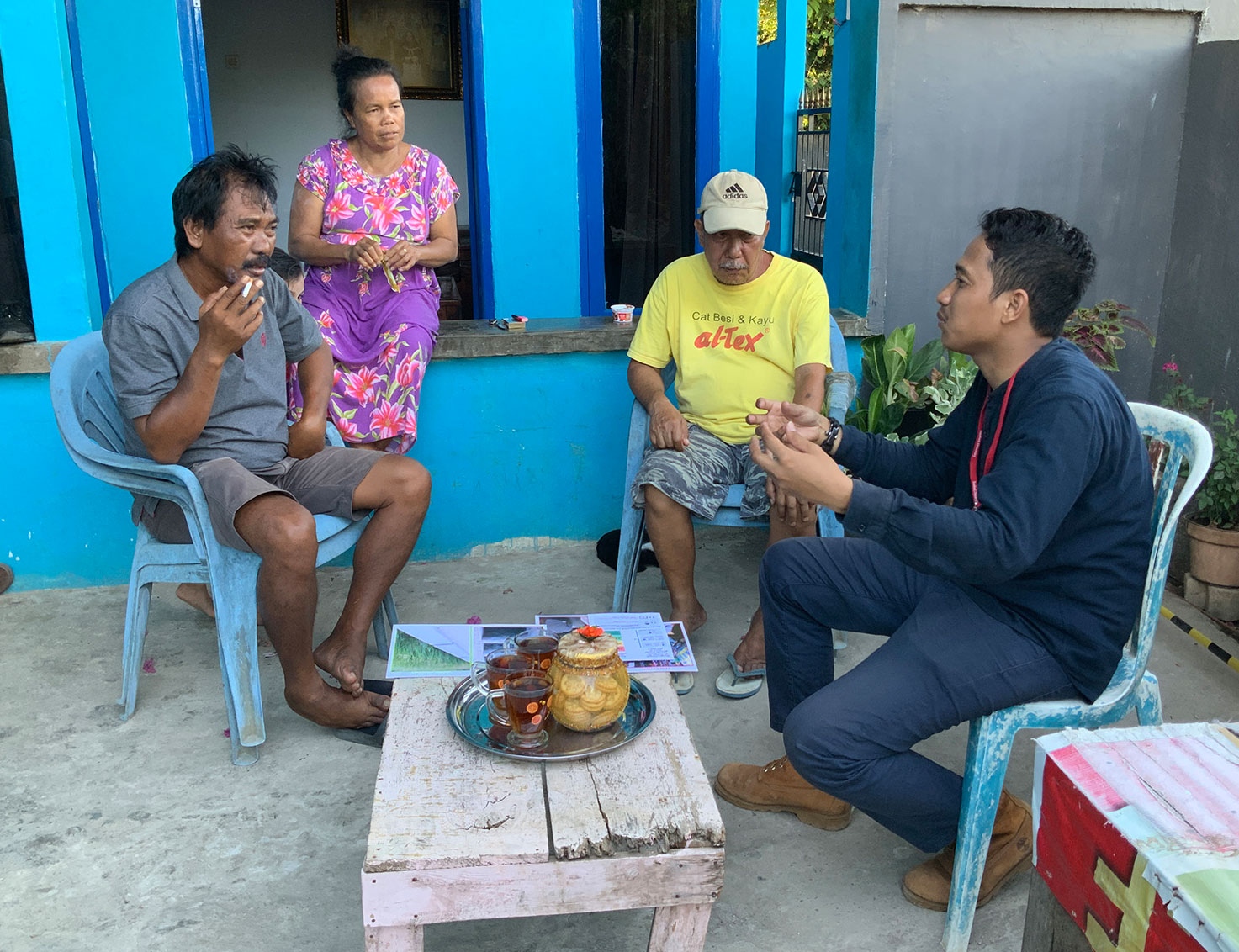Panrita is an acronym for “PerencanaAN RI kampungTA”, which translates to English as
“planning in your kampung”. It is a participatory design framework (set of workshops) focused on the
community input
in the design phase
of the RISE water-sensitive intervention. However, panrita also signifies a specific role within Indonesian village communities.
The word panrita translates as “a person that sees”
(Halim 2012). It originates from Sanskrit, and Halim (2012) traces its origin to the 17th century. Panrita is a name for a knowledgeable and highly respected person in the kampung who has technical expertise
,
listens
to different
voices, and who is capable to see an issue from different perspectives
. Panrita creates a vision for the future and advises the community leader, acting in relation to the issue at hand. Halim (2012) criticises the modern Indonesian society in which it seems that this practice has disappeared. There are no more political leaders who ask advice from intellectuals and scholars, but also – there are no scholars that participate in the action, getting directly involved
in challenges.
Creating the identity for the participatory design process was important for both the local team and the
community. Looking for symbolic meanings in names is rooted in Indonesian culture, as well as constructing acronyms that have double meanings and innuendos (Jones 1975). For Makassar team members who facilitated all Panrita workshops and continue to run participation in RISE, identifying
with the process and defining its values was a crucial part of the process:
“Sometimes you name something, but the meaning will follow. And now, I feel the meaning follows us. The PANRITA is - our PANRITA is not the person. [It] is not us, but it’s like ... how the knowledge is transferred to the community. Yeah. It’s not a person, but, yeah ... There are no experts here,
but we should transfer all of the knowledge to all of people so people will be the PANRITA, all.”
[architect, RISE Makassar team, 1 November 2019]
Panrita is a way to expand the notions of western-oriented design meanings, values, communication and outputs.
![]() in the design phase
in the design phase![]() of the RISE water-sensitive intervention. However, panrita also signifies a specific role within Indonesian village communities.
of the RISE water-sensitive intervention. However, panrita also signifies a specific role within Indonesian village communities. ![]() (Halim 2012). It originates from Sanskrit, and Halim (2012) traces its origin to the 17th century. Panrita is a name for a knowledgeable and highly respected person in the kampung who has technical expertise,
(Halim 2012). It originates from Sanskrit, and Halim (2012) traces its origin to the 17th century. Panrita is a name for a knowledgeable and highly respected person in the kampung who has technical expertise,
![]() listens
listens![]() to different
to different![]() voices, and who is capable to see an issue from different perspectives
voices, and who is capable to see an issue from different perspectives![]() . Panrita creates a vision for the future and advises the community leader, acting in relation to the issue at hand. Halim (2012) criticises the modern Indonesian society in which it seems that this practice has disappeared. There are no more political leaders who ask advice from intellectuals and scholars, but also – there are no scholars that participate in the action, getting directly involved
. Panrita creates a vision for the future and advises the community leader, acting in relation to the issue at hand. Halim (2012) criticises the modern Indonesian society in which it seems that this practice has disappeared. There are no more political leaders who ask advice from intellectuals and scholars, but also – there are no scholars that participate in the action, getting directly involved![]() in challenges.
in challenges. 





